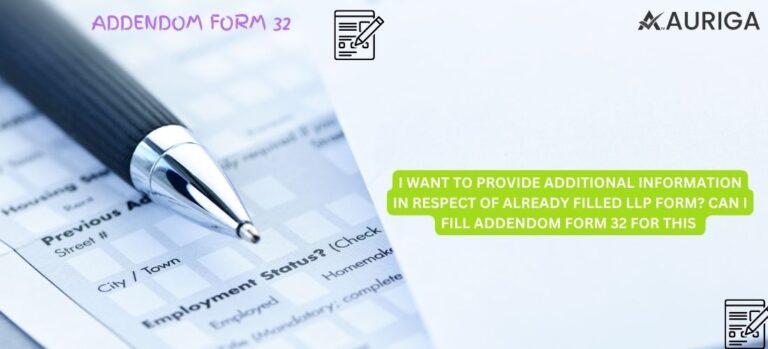
HOW CAN I APPLY FOR REVERSING LLP NAME?
Introduction
ToggleYOU NEED TO KOW HOW CAN I APPLY FOR REVERSING LLP NAME?
Reversing the name of a Limited Liability Partnership (LLP) involves a systematic process governed by regulatory guidelines. Initially, one must thoroughly review the regulations pertinent to LLP naming conventions in the relevant jurisdiction. Ensuring the availability of the proposed reversed name is paramount, requiring a comprehensive check against existing registrations. Subsequently, the preparation of requisite documentation, including the LLP agreement and resolution for name reversal, is imperative. Upon compiling the necessary paperwork, the application is submitted to the appropriate regulatory authority along with the prescribed fees. Upon approval, diligent updates to all pertinent records and documents ensue, while stakeholders are duly notified of the name reversal. Finally, compliance with ongoing regulatory requirements and completion of any additional legal formalities contribute to a seamless transition under the reversed name. Visitofficialwebsite
PROCESS TO APPLY FOR REVERSING LLP NAME
Eligibility Check: Verify whether your LLP is eligible for a name change, ensuring it complies with naming guidelines and regulations in your jurisdiction.
LLP Agreement Amendment: If necessary, amend the LLP agreement to include the new reversed name and obtain approval from the partners for this change.
Resolution Approval: Pass a resolution among the partners of the LLP, formally approving the name reversal. Document the resolution for your records.
Name Availability Check: Confirm that the reversed name is available for use and that it complies with naming regulations in your jurisdiction.
Application Preparation: Prepare the required documents and forms for the name change application. These typically include:
- Old and new names of the LLP.
- A copy of the LLP agreement reflecting the name change.
- A copy of the resolution passed by the partners.
- Any application forms provided by the regulatory authority.
- Additional supporting documents as requested.
Application Submission: Submit the complete application, along with all required documents, to the appropriate regulatory authority responsible for LLP registrations. Pay any applicable fees.
Review and Approval: Await the review and approval of the name change application by the regulatory authority. This process may involve a review of the submitted documents and compliance with naming regulations.
Name Change Certificate: Upon approval, you will receive a name change certificate or notification from the regulatory authority, confirming the successful name reversal.
Update Official Records: Update all official records, including government registrations, licenses, permits, and tax documents, to reflect the new LLP name.
Stakeholder Notification: Inform stakeholders, such as clients, suppliers, employees, and business partners, about the name change. Update your website, stationery, marketing materials, and signage with the new name.
How do I transfer LLP to another person
Transferring ownership in a Limited Liability Partnership (LLP) typically involves the following steps:
Review LLP Agreement: Start by reviewing the LLP agreement. This document may contain provisions related to the transfer of ownership interests, including any restrictions or requirements.
Obtain Consent: Obtain consent from all partners of the LLP for the transfer. Depending on the terms of the LLP agreement and applicable laws, this may involve holding a meeting of partners and passing a resolution approving the transfer.
Draft Transfer Agreement: Prepare a transfer agreement outlining the terms and conditions of the transfer, including the price, shares or ownership interests being transferred, and any other relevant details. Ensure that the agreement is legally binding and compliant with the LLP agreement and local regulations.
Execute Transfer Agreement: Sign the transfer agreement, along with the parties involved in the transfer. This may include the transferring partner(s) and the recipient(s) of the ownership interests.
Update LLP Records: Update the LLP’s records to reflect the transfer of ownership interests. This may involve filing the transfer agreement with the Registrar of Companies or other relevant regulatory authorities, along with any required forms and fees.
Amend LLP Agreement: If necessary, amend the LLP agreement to reflect the changes in ownership resulting from the transfer. This may require the consent of all partners and compliance with any formalities specified in the LLP agreement or local laws.
Notify Stakeholders: Notify relevant stakeholders, including clients, suppliers, and employees, about the change in ownership. This helps maintain transparency and continuity in business operations.
Compliance Requirements: Ensure compliance with all regulatory requirements related to the transfer of ownership interests in an LLP. This may include filing necessary forms, paying applicable taxes, and updating any licenses or permits.
Finalize Transfer: Once all necessary steps have been completed, finalize the transfer of ownership interests according to the terms outlined in the transfer agreement.
It’s important to seek guidance from legal and financial professionals familiar with LLP regulations and procedures to ensure compliance and smooth execution of the ownership transfer.

What form is required for LLP name change
To change the name of a Limited Liability Partnership (LLP), you typically need to file Form 5 with the Registrar of Companies (ROC) in most jurisdictions. Form 5 is commonly titled “Application for Reservation or Change of Name” and is used for various name-related transactions, including changing the name of an LLP.
Here are the general steps involved in using Form 5 for an LLP name change:
Obtain Form 5: You can typically obtain Form 5 from the official website of the Registrar of Companies or the relevant regulatory authority. It may also be available physically at their office.
Fill out the Form: Complete Form 5 accurately and provide all required information. This includes details such as the current name of the LLP, the proposed new name, reasons for the name change, and other relevant information.
Attach Supporting Documents: Depending on the jurisdiction, you may need to attach supporting documents such as a resolution passed by the partners approving the name change, identity proofs of partners, or any other documents specified by the regulatory authority.
Pay Fees: In many cases, there will be a fee associated with filing Form 5 for an LLP name change. Ensure that you include the appropriate fee payment with your application.
Submit the Form: Once the form is completed and all necessary documents are attached, submit it to the Registrar of Companies or the relevant regulatory authority. This can usually be done either online or in person, depending on the options provided by the authority.
Await Approval: After submission, the Registrar will review the application. If everything is in order and the proposed name meets the requirements, the Registrar will approve the name change.
Receive Certificate: Upon approval, the Registrar will issue a Certificate of Name Change, officially recognizing the LLP’s new name.
Update Records: Ensure that you update all relevant records, documents, and communications to reflect the new name of the LLP. This may include updating bank accounts, licenses, contracts, and any other relevant documents.
It’s important to follow the specific instructions provided by the Registrar of Companies or the relevant regulatory authority in your jurisdiction and to comply with all applicable laws and regulations when changing the name of an LLP.
How do I change my name on my LLP online
Changing the name of your Limited Liability Partnership (LLP) online typically involves the following steps:
Check Name Availability: Before initiating the name change process, ensure that your proposed new name is available for registration. Most jurisdictions provide online databases or search tools where you can check the availability of names.
Prepare Required Documents: Gather all the necessary documents for the name change process. This usually includes a resolution passed by the partners approving the name change and any other documents required by the regulatory authority.
Register on the Official Portal: Visit the official website of the Registrar of Companies or the relevant regulatory authority responsible for LLP registrations in your jurisdiction. Create an account if you haven’t already done so, or log in if you have an existing account.
Access Online Services: Look for the option to access online services related to LLP registrations or name changes. This might be labeled as “LLP Services,” “Name Change,” or something similar.
Fill Out the Application Form: Locate the online form for changing the name of an LLP. This form is typically available in the online services section. Fill out the form accurately and completely with the required information.
Upload Supporting Documents: Scan and upload all the required supporting documents, including the resolution approving the name change and any other documents specified by the regulatory authority. Make sure that the documents meet the specified file format and size requirements.
Pay Fees: Pay any prescribed fees associated with the name change process. The online portal should provide options for online payment using credit/debit cards, net banking, or other accepted payment methods.
Review and Submit: Review all the information entered in the application form and ensure that it is accurate. Once you are satisfied, submit the application electronically through the online portal.
Await Approval: After submitting the application, the regulatory authority will review it. If everything is in order and the proposed name meets the requirements, they will approve the name change.
Receive Certificate: Upon approval, the regulatory authority will issue a Certificate of Name Change electronically. Download and save the certificate for your records.
Update Records: Update all relevant records, documents, and communications to reflect the new name of the LLP. This may include updating bank accounts, licenses, contracts, and any other relevant documents.
By following these steps and utilizing the online portal provided by the regulatory authority, you can efficiently change the name of your LLP online. Make sure to adhere to all instructions and requirements specified by the authority to ensure a smooth name change process.
ADVANTAGE TO APPLY FOR REVERSING LLP NAME
Enhanced Branding: Reversing the name can create a unique and memorable brand identity for the LLP.
Marketing Opportunities: A reversed name can be a valuable marketing tool, attracting attention and setting the LLP apart from competitors.
Fresh Image: It provides an opportunity to modernize and refresh the LLP’s image, making it more appealing to clients and stakeholders.
Memorability: A creatively reversed name may be easier for clients and partners to remember.
Differentiation: It helps differentiate the LLP from others in the same industry, potentially leading to increased market share.
Adaptation: Demonstrates the LLP’s ability to adapt and evolve in response to changing market dynamics.
Increased Recognition: A new name may lead to increased recognition and visibility in the market.
Positive Perception: Stakeholders may perceive the LLP as forward-thinking and innovative.
Relevance: It ensures that the LLP’s name remains relevant and aligned with its business goals.
Improved Marketing: A reversed name can inspire creative marketing campaigns that leverage the new identity.
DISADVANTAGE TO APPLY FOR REVERSING LLP NAME
Rebranding Costs: Changing the name on official documents, stationery, marketing materials, and signage can be expensive.
Confusion: Stakeholders, including clients and partners, may initially be confused by the name change.
Legal and Regulatory Requirements: The process may involve legal and regulatory complexities, depending on your jurisdiction.
Time-Consuming: The name change process can be time-consuming and may disrupt normal business operations.
Client and Partner Relationships: Some clients and partners may have established relationships with the old name and may need time to adapt to the change.
Financial Impact: There may be financial implications associated with updating branding materials, domain names, and trademarks.
Risk of Negative Perception: Stakeholders may view the name change as unnecessary or perceive it negatively.
Market Recognition: It may take time for the market to recognize and accept the new name.
Legal Challenges: Existing contracts, agreements, and legal obligations under the old name may need to be addressed.
Employee Morale: Employees may be affected by the change, and morale may need to be managed during the transition.
CONCLUSION OF APPLY FOR REVERSING LLP NAME
In conclusion, applying for the reversal of an LLP name is a strategic decision that can have both advantages and disadvantages. The process involves several steps, including eligibility checks, resolution approvals, name availability verifications, and compliance with legal and regulatory requirements. While reversing the name can provide benefits such as enhanced branding and marketing opportunities, it also comes with challenges, including rebranding costs and potential confusion among stakeholders.
HOW AURIGA ACCOUNTING HELP YOU TO APPLY FOR REVERSING LLP NAME
1. Legal Expertise:
- Auriga Accounting can offer legal expertise to ensure that the name reversal process complies with all applicable laws, regulations, and jurisdiction-specific requirements. They can guide you through the legal aspects of the name change.
2. Compliance Management:
- Auriga Accounting can assist in managing the complex compliance requirements associated with the name reversal, ensuring that all necessary documents are prepared accurately and submitted on time to regulatory authorities.
3. Document Preparation:
- Auriga Accounting can help in drafting and preparing the necessary legal documents, including resolutions, LLP agreement amendments, and the name change application. This ensures that the documentation is comprehensive and complies with legal standards.
4. Regulatory Guidance:
- Auriga Accounting can assist in navigating the regulatory landscape, ensuring that the name reversal process aligns with the specific requirements of your jurisdiction and the relevant regulatory authorities.
5. Application Submission:
- Auriga Accounting can help you prepare and submit the name change application to the appropriate regulatory authority, ensuring that all required documents and forms are complete and accurate.
6. Compliance with Naming Guidelines:
- Auriga Accounting can provide guidance on adhering to naming guidelines and regulations to ensure that the reversed name is both unique and compliant with legal standards.
7. Financial Advisory:
- Auriga Accounting can offer financial advisory services to help you budget for the costs associated with rebranding and updating official documents.
8. Tax Implications:
- Auriga Accounting can provide insights into any tax implications related to the name change and assist in managing tax considerations during the process.
9. Stakeholder Communication:
- Auriga Accounting can advise on how to communicate the name change to stakeholders effectively, including clients, suppliers, employees, and partners.
10. Record Keeping: – Auriga Accounting can help establish efficient record-keeping practices to ensure that all official records, including government registrations, licenses, and permits, are updated to reflect the new name.












